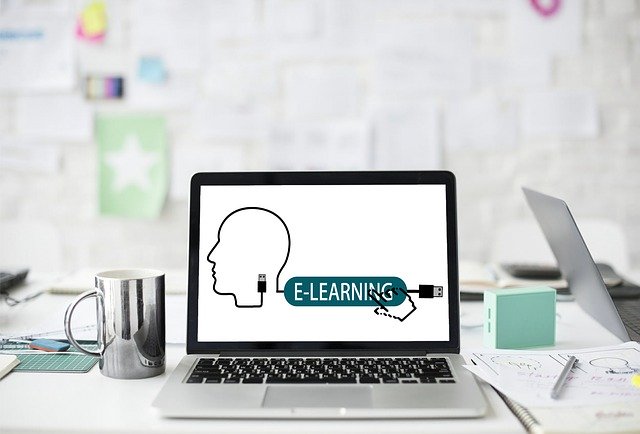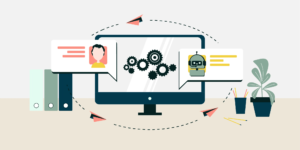As coronavirus continues to spread worldwide, people are thinking of when everything will return to normalcy. Everyone is willing to get back to their workplace since work from home is nothing less than a struggle. Similarly, children can’t wait to go back to school either because who likes studying without friends?
“Epidemiologists suggest people will have to adopt the new normal since Covid-19 is not going anytime soon. Are you wondering how it would be?”
Undoubtfully, it will involve higher levels of health precautions to eliminate the threat of contracting the virus. Digital technology will play a vital role in ensuring the smooth functioning of banking, business, health, and especially the education sector. After all, none of the countries can afford the loss of education since the economy needs to dig itself out of recession.
Therefore, schools, colleges, and universities are crawling towards virtual infrastructures. In regions where the threat of viruses is minimal are opening schools with safety protocols. Thus, sooner or later, everyone will have to adapt to this change, and the education sector has already plunged into it. Look below to see how the education sector modifies to the new normal.
1. Online Classes
Every educational institute is bringing forward technical infrastructures that support some form of virtual learning. Online learning is being pushed deeper as the ultimate solution, addressing the challenges of this industry during this pandemic. Instructors are using videoconferencing to foster face-to-face communication with students, along with some other learning management systems.
Hence, the concept of online learning is growing extensively. Universities are offering online degree programs with the same credentials. Likewise, you can take online classes for high school credit, allowing you to graduate timely. Most of the schools are doing this flawlessly, while some teachers are still learning the ropes. However, this new normal is solely dependent on technological tools that are not accessible to everyone.
2. External Partnerships
The pandemic is highlighting an education gap since everyone is not privileged enough to have iPads and laptops. Likewise, not every teacher is tech-savvy, especially high-qualified senior professors. Surprisingly, educationalists are addressing these concerns. In this new normal, they build a healthier home and school relationships to facilitate robust and consistent communication.
Schools are teaching parents how to navigate the learning environment and guide children with online classes. This idea is also expanding in local communities to help other institutions enforce effective educational programs. With these partnerships, it will become easier for everyone to cope in these uncertain times without sacrificing education.
3. Virtual Assessments
In this pandemic, students are going through a tough time with a lot of mental pressure. Hence, educational institutes are reviewing exams and assessments, allowing everyone to adjust to the new normal. They are making students accountable for learning while also supporting and encouraging them by offering flexibility. It lets students finish their assignments when they are ready and capable of doing it.
Teachers are imposing strict deadlines, but if someone is unable to meet them – they are also offering leverage to students. Likewise, the grading based on how much students have learned in these uncertain times rather than only considering results. The focus on mastery of learning and adaptation of grades that indicate knowledge is likely to make education more meaningful. Thus, the grades given will project fairness, compassion, and flexibility.
4. Prioritizing On Flexibility and Empathy
The current pandemic came like a surprise to everyone, leaving people clueless on how to deal with it. Educators and teachers are trying to develop skills that can help students thrive without pressurizing them.
Unsurprisingly, there is a need for flexibility, empathy, and adaptability. Teachers are likely to develop these skills through life experiences and encourage students to do the same. Now, students will receive more opportunities to practice and establish skills beyond the classroom walls.
“Educationists focus on growth mindset, appreciation of mistakes, and resilience as these are the most crucial life lessons in this pandemic.”
After all, teaching them to empathize with others can help make the new normal bearable and effortless on society.
5. Social DIstancing and Face Coverings
Fortunately, some regions and cities have been prosperous in reducing the threat of Covid-19. As a result, they are resuming with life by opening schools but with all safety protocols. Honestly, parents were having a tough time managing their children’s learning routine, assisting them with homework, and classwork. Those who didn’t have digital tools were already lagging.
However, schools are no longer the same. They are divided into two shifts to practice social distancing. Half of the students take classes in the morning, while others in the evening. They can no longer sit with their friends since distance should maintain at all times. Likewise, students can’t enter the school without a mask and gloves. In the coming months, all schools reopening will have to adapt to this new normal.
Final Thoughts
The new normal focuses on learning but without compromising on safety protocols. Pushing online learning is quite an incredible concept because students are learning from the comfort of their homes. It works perfectly if education systems adopt efficient platforms and policies that reduce teacher’s burdens and keep their morale up. All this is likely to continue for several years, so the earlier you get used to it, the better!










